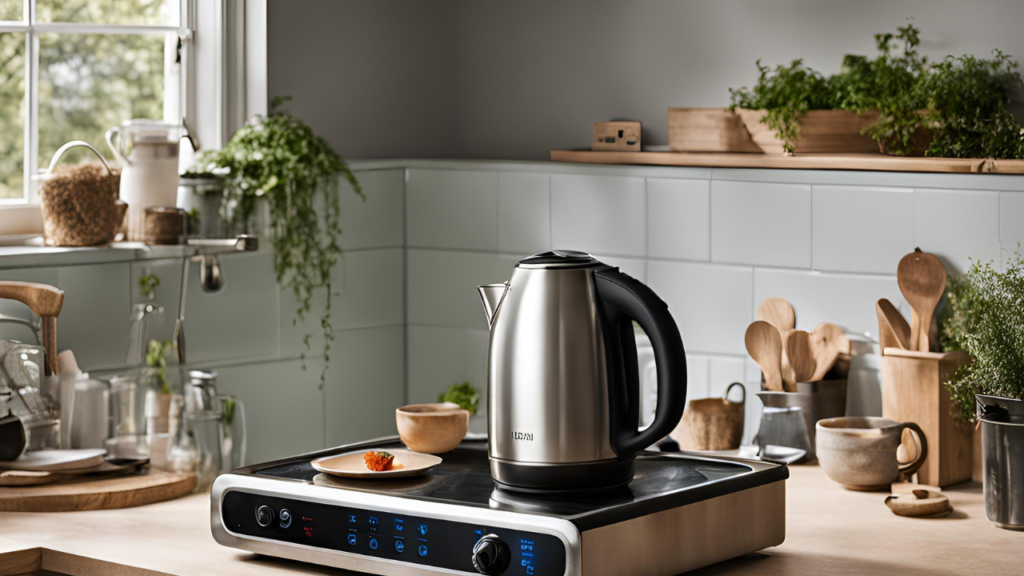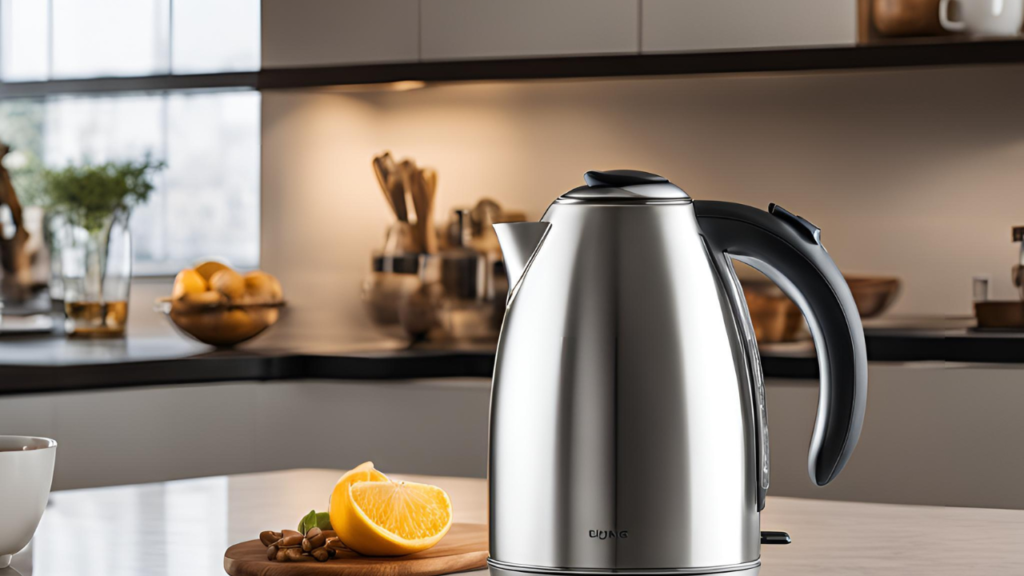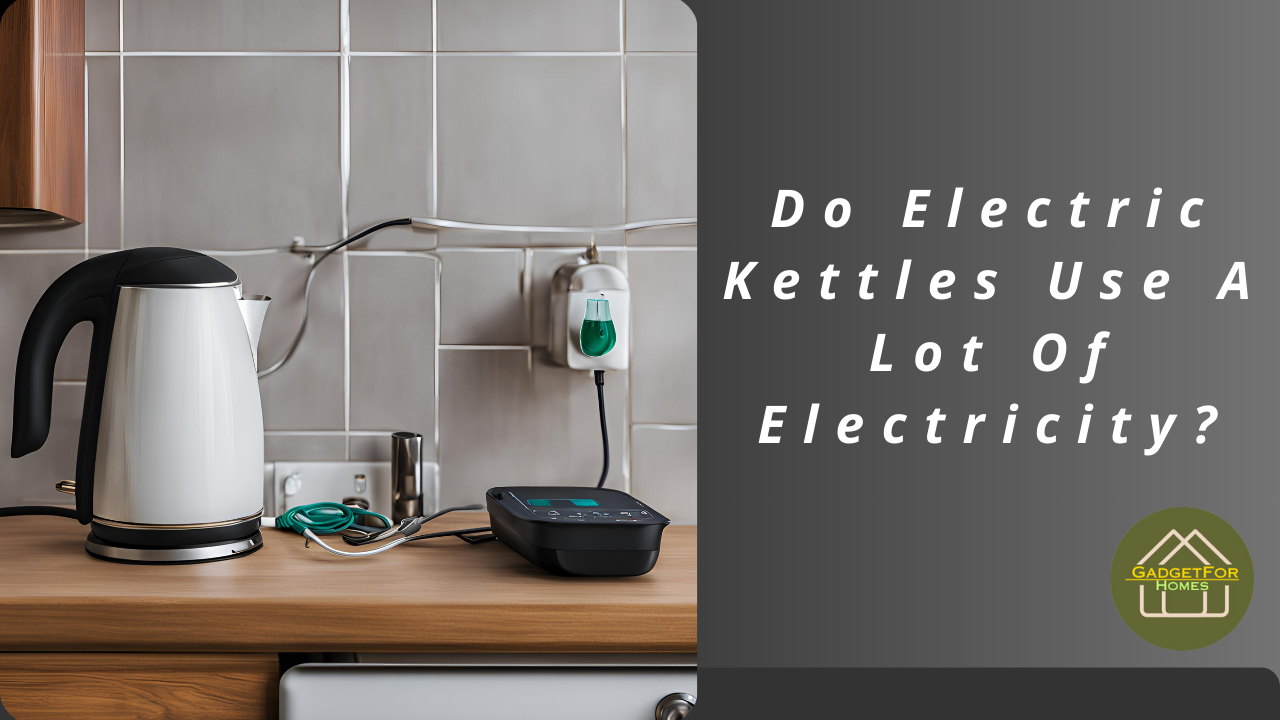Introduction: In the modern era, the electric kettle has become one of the most essential appliances in the home, whether it is for the home members, students, office workers, and many other people. Coffee, tea, water, and other non-alcoholic liquids can all be heated rapidly with this energy-efficient device.
Table of Contents
Do kettles use a lot of electricity?
"Kettles use a lot of electricity" - it is not true. A kettle is a high-efficiency device, but it is designed to boil water, coffee, tea, and nonalcoholic liquids for a short period of time, so it does not make a huge difference in the household electricity bill. However, the power cost might be affected if the kettle is used frequently or if it is a low-rated kettle.Kettles use comparatively less electricity than other appliances because of their relatively short operating time. On this blog, we covered topics like how much electricity a kettle requires, how to reduce its electricity use, how efficient it is, etc.
How quickly does the kettle boil water?
- A kettle’s design and efficiency, the power rating of its heating element, and the water’s initial temperature all affect how long it takes for water in an electric kettle to reach its boiling point.Even though it takes three to five minutes for the water in an electric kettle to heat up, in normal circumstances, the water can reach the boiling point rather rapidly.
But it depends on various factors—

1. Power rating:
- A kettle with a higher rating produces more energy than one with a lower rating; therefore, it boils water faster. A suitable kettle power rating is often between 2 and 3 KW.

2. Power supply:
- The boiling process can be slowed with a lower voltage supply, which reduces the power supplied to the kettle.

3. Nature of a kettle:
- Stainless steel and glass kettles are more efficient than plastic kettles because they can transfer heat from the heating element of the kettle to the water better.

4. Environmental conditions:
- It also depends on the original temperature of the water as well as external factors like air and room temperature.
You can also read my this blog - Can we use electric kettle without water ?How much electricity does a kettle use?
The wattage of an electric kettle and how long it is used might affect how much electricity it uses.
For a 500 W kettle:
- A kettle with 500 watts is equivalent to 0.5 KW. A 500-watt kettle will use 0.5 units of electricity for an hour of operation. It will take five minutes for water to boil if someone heats it during that time. In that scenario, after one round, it will use 0.5 * 5/60 = 0.4 units of electricity.O.4 units cost between Rs 6 and Rs 9.
For a 1000 W kettle:
- One hour of operation uses one unit of electricity from a 1000-watt kettle. If we apply the calculation as previously, 1 * 5/60 = 0.8 units, which will cost roughly Rs 5 to Rs 8 for one round.
For a 1500 W kettle:
- 1.5 * 5 x 60 = 1.2 units of electricity are used by a 1500 W kettle, costing approximately Rs 7 to Rs 11.

Why is a kettle not 100% efficient?
- More is the power, more is the efficiency. If we look at a 1 kW kettle, the efficiency will be 950-975; it is approximately 96-97% efficient. Again, if we look for a 3 kW kettle, the efficiency will be 2950-2975; it is approximately 98-99% efficient. Now, why are these kettles not 100% efficient?
- The electric kettle’s heating element transforms electrical energy into heat when we apply electricity.This time the electrical energy is not fully converted to heat the water; some of it is lost around, some is lost in emergency resistance, some energy is converted into sound energy, and the water is not able to absorb all of it. All of these factors work together to lower a kettle’s overall efficiency. Although recent kettles are made to reduce these losses.
Why do modern electric kettles not cause short circuits?
- Modern electric kettles come equipped with the most advanced safety measures, such as overcurrent protection, automated shut-off, thermal cut-off, insulation, and improved wiring.

- Overcurrent protection:
In case a large amount of current is unexpectedly drawn into the kettle when it is not needed or if there is a failure to function, certain modern kettles include an overcurrent protection feature that automatically shuts off the electric kettle.

- Automated shutoff:
Modern electric kettles have an automatic shutoff mechanism. When water is completely heated, the kettle automatically turns off due to this mechanism.

- Thermal power off:
There is another mechanism in the kettle called the thermal power off mechanism. When the kettle reaches its maximum temperature while heating water, the kettle automatically turns off.

If you confuse about whether an electric kettle be used in a normal plug or not them check out this blog
👇👇👇Can we use an electric kettle in a normal plug?Does a kettle use electricity when switched off?
- When turned off, the electric kettle normally doesn’t use any electricity. If the plug is placed into the electric kettle but another device is attached to the same board and drawing power from it, a very little amount of electricity may flow to the electric kettle even after it is turned off. Always disconnect the kettle after use. If the switch is turned off and no other device on the board gets electricity, but the kettle consumes it, the kettle has been damaged.
- Some smart kettles include WiFi networking functions. Even after the kettles are turned off, some electricity may continue to flow to them.
Does using a kettle and a stove simultaneously use more electricity?
- Using a kettle and a stove together does not consume much electricity because both of these things consume power independently. However, if both of these things are used together, the total electricity consumption will increase. For example, if the kettle consumes 2500 watts of power and the stove consumes 1500 watts of electricity, the total consumption will be 4000 watts. Again, if utilized independently, they will use 2500 and 1500 watts of electricity. As a result, utilizing both simultaneously will increase total electricity use.
- Using two things together increases overall electricity usage, resulting in a higher electricity bill.
- If you use the same board for a kettle and a stove at the same time, there is a lot of strain on that board; therefore, if you want to use both, the board’s capacity must be high.
- A kettle is significantly more energy efficient than a stove; hence the stove wastes a lot of energy compared to a kettle.
Related - Can we use electric kettle daily ?
